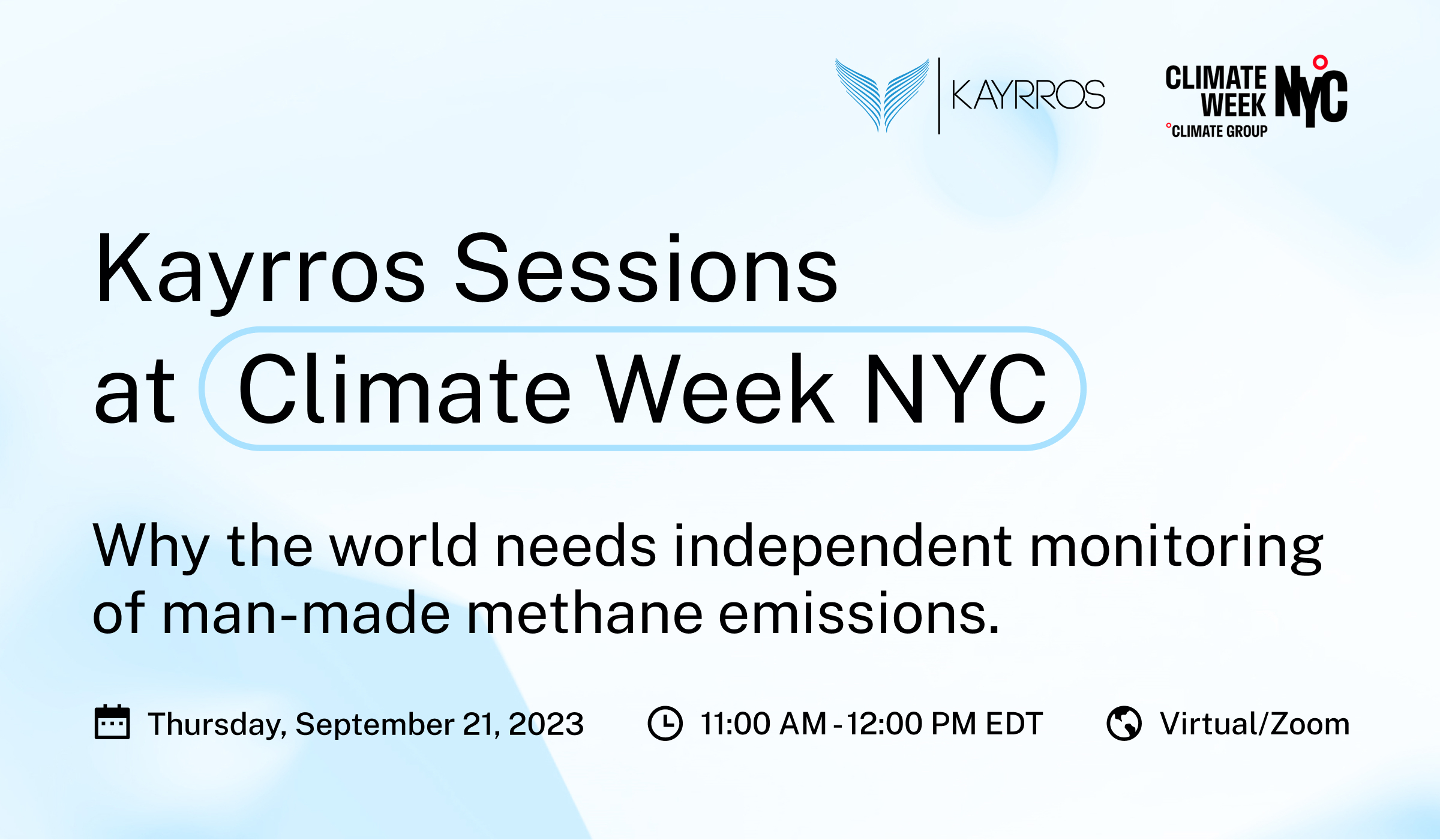As part of Climate Week NYC, Kayrros is inviting you to a pivotal discussion on the crucial role of independent monitoring in the field of methane emissions.
Methane is the fastest growing greenhouse gas, with more than 20 times the warming power of CO2 in the first 20 years. On current trends, methane is projected to contribute as much as CO2 to global warming in the first 20 years. It is also comparatively easy to abate, making it the lowest hanging fruit for climate action. Despite some fossil fuel companies making efforts to reduce their methane emissions, a growing body of scientific evidence suggests that the industry as a whole—save for a few exceptions—continues to understate its emissions. Self reporting and self regulating of methane emissions by the fossil fuel industry have proven ineffective. On the other hand, independent detections and measurements via monitoring satellites are making strides and delivering concrete results at scale.
Monitoring earth observation satellite imagery processed with AI is currently the only truly independent way to track and measure man-made methane emissions. Over the last few years, breakthroughs in AI, coupled with the launch of new satellites, have significantly advanced our understanding of anthropogenic methane emissions, thereby opening up extensive opportunities for mitigation. AI and earth observation (EO) are at the core of the work being done by the International Methane Emission Observatory (IMEO). For example, evidence of methane emissions from Turkmenistan, a top emitter, has helped convince the country to look for ways to reduce its emissions. AI and EO have helped reduce emissions from Australia. Independent measurements via satellite can also determine the lifecycle emissions of LNG and crude oil exports, and thereby setting the market for “differentiated” or “responsibly produced” fossil fuel products.
This panel discussion will review the current state of the science on independent satellite monitoring of methane emissions. We will discuss what to expect from new satellites due to be launched in the near future, provide a progress report of current methane abatement plans, and some of the uses of satellite measurements that are already moving the needle and helping to reduce our global footprint.

